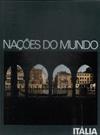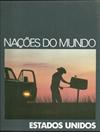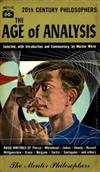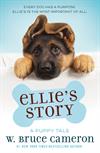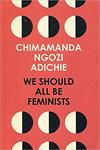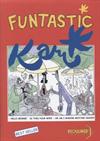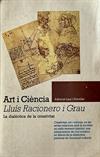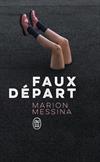
Alice's Adventures in Wonderland and Through the Looking-Glass
1 journaler for this copy...
Step into the world of Alice, Alice's Adventures in Wonderland and its sequel Through the Looking-Glass, and you step into a surreal world (and yes it may have influenced the surrealists), a world riddled with (and yes it contain riddles) word play, puns, paradoxes and parodies (which in turn has been much parodied), satire, dry often black humour, a world where logic is stretched to the limit where it becomes illogical.
There is a pre-1953 Wolfgang Paalen painting in the surrealist section of the MACAW collection in Puerto de la Cruz that screams Alice!
Where did this surreal world come from?
Alice's Adventures in Wonderland and Through the Looking-Glass were written for children and yet they have an appeal to adults. We know that Alice's Adventures in Wonderland was written for children as it was written for one particular child, Alice Liddell, on one summer's day, or at least it is based on a story told to Alice and her sisters.
Alice Liddell and her two sisters, Lorina Liddell and Edith Liddell, were on a boat trip on the river near Oxford, with Reverend Robinson Duckworth and the Reverend Charles Lutwidge Dodgson. To keep the girls from getting bored, Charles Dodgson told them a story about a little girl called Alice who followed a White Rabbit down a rabbit hole.
The tale must have been interesting else it would have failed in it primary objective of not letting the girls get bored. Alice Liddell must have found it a worthy tale as she asked for a copy. This was duly delivered two years later as a handwritten manuscript Alice's Adventures Under Ground, with illustrations by Charles Dodgson himself.
Macmillan were interested and the riverside tale was published as Alice's Adventures in Wonderland by Lewis Carroll, with illustrations by the political cartoonist John Tenniel. It has never been out of print since, neither has the sequel Through the Looking-Glass.
Charles Dodgson grew up in a large family where games were a regular feature. They even had their own in-house magazine Mishmash, in which the first verse of the Jabberwocky was first published.
Compare this stimulating environment with today's children, fed on a diet of junk food from McVomit's and and sat before a TV or playing computer games, when that is not plugged into an mp3 player.
The environment was one of anarchic chaos. His father appears to have had the same sense of dry humour and wit. In response to a request to bring back from a trip to Leeds a file, a screwdriver and a ring his father replied in a letter:
As soon as I get to Leeds I shall scream out in the middle of the street, Ironmongers, Iron-mongers ... I will have a file & a screwdriver, & a ring, and if they are not brought directly, in forty seconds I will leave nothing but one small cat alive in the whole town of Leeds, & I shall only leave that, because I am afraid I will not have time to kill it.
Then what a bawling & tearing of hair there will be! Pigs & babies, camels & butterflies, rolling in the gutter together – old women rushing up the chimneys & cows after them – ducks hiding themselves in coffee cups, & fat geese trying to squeeze themselves into pencil cases ...
The words and phrases used by Lewis Carroll have entered into the English language, 'chortle', 'curiouser and curiouser', 'off with her head!' Thanks to Alice's adventures we know dormice are sleepy and Hatters and March Hares are mad.
At times this surreal world poses profound questions. Tweedledum tells Alice that as she is in the Red King's dream, should he wake up she will go out, just like a candle.
What is the nature of reality? Does God exist because we think he exists?
In The Pilgrimage by Paulo Coelho, an account of a pilgrimage along the Way of St James, Paulo and his guide Petrus hold a discussion on the existence of God, and does he not exist if the believer no longer believes.
In The Zen of Motorcycle Maintenance, a reflection of the existence of Newton's Laws of Motion before Newton discovered them.
In the novel Matter by Iain M Banks, the Universe exists as a computer game which will end when the game ends and a new game begins.
At times we have what could pass as Eastern mysticism: What happens to a flame when it goes out?
“ for it might end, you know, ” said Alice to herself, “in my going out altogether, like a candle. I wonder what I should be like then?” And she tried to fancy what the flame of a candle looks like after the candle is blown out, for she could not remember ever having seen such a thing.
Or as a Zen master would ask: What is the sound of one hand clapping?
The book is the writer, the writer is the book. Having read all the books, some more than once, and a detailed well-researched biography, this is certainly true of the Brazilian writer Paulo Coelho. Is it true of Charles Dobson?
From the adventures of Alice, we can see that, like J R R Tolkien, he loved telling tales, he loved being in the company of children, though not all children. But from this we should not draw the false conclusion that he did not enjoy the company of adults or as some have falsely claimed he was a virtual recluse. His diaries show he was a social creature and enjoyed company of all ages and both sexes.
He was a lecturer in mathematics at Oxford where he lectured until his sudden and unexpected death. He was a deeply religious man, attended church regularly, occasionally preached, religion permeated all aspects of his life, not just on a Sunday. He was a very accomplished photographer.
Alice's Adventures in Wonderland is a game of cards, Through the Looking-Glass a game of chess. The Queen of Hearts is often confused with the Red Queen, or worse assumed to be the same person. They are not. The Queen of Hearts is a playing card, the Red Queen a chess piece.
The board on which Alice plays in Through the Looking-Glass is a real piece of checkerboard countryside in the English countryside. Greedy developers if they have their way wish to build on it, to cover it beneath tarmac and concrete.
The introduction by Michael Irvin is riddled with mistakes, regurgitates many of the Carroll myths. For a reality check see The Real Lewis Carroll, an excellent talk given by Edward Wakeling to the Lewis Carroll Society.
Also see
Life of Lewis Carroll in Guildford
Legacy of Lewis Carroll
There is a pre-1953 Wolfgang Paalen painting in the surrealist section of the MACAW collection in Puerto de la Cruz that screams Alice!
Where did this surreal world come from?
Alice's Adventures in Wonderland and Through the Looking-Glass were written for children and yet they have an appeal to adults. We know that Alice's Adventures in Wonderland was written for children as it was written for one particular child, Alice Liddell, on one summer's day, or at least it is based on a story told to Alice and her sisters.
Alice Liddell and her two sisters, Lorina Liddell and Edith Liddell, were on a boat trip on the river near Oxford, with Reverend Robinson Duckworth and the Reverend Charles Lutwidge Dodgson. To keep the girls from getting bored, Charles Dodgson told them a story about a little girl called Alice who followed a White Rabbit down a rabbit hole.
The tale must have been interesting else it would have failed in it primary objective of not letting the girls get bored. Alice Liddell must have found it a worthy tale as she asked for a copy. This was duly delivered two years later as a handwritten manuscript Alice's Adventures Under Ground, with illustrations by Charles Dodgson himself.
Macmillan were interested and the riverside tale was published as Alice's Adventures in Wonderland by Lewis Carroll, with illustrations by the political cartoonist John Tenniel. It has never been out of print since, neither has the sequel Through the Looking-Glass.
Charles Dodgson grew up in a large family where games were a regular feature. They even had their own in-house magazine Mishmash, in which the first verse of the Jabberwocky was first published.
Compare this stimulating environment with today's children, fed on a diet of junk food from McVomit's and and sat before a TV or playing computer games, when that is not plugged into an mp3 player.
The environment was one of anarchic chaos. His father appears to have had the same sense of dry humour and wit. In response to a request to bring back from a trip to Leeds a file, a screwdriver and a ring his father replied in a letter:
As soon as I get to Leeds I shall scream out in the middle of the street, Ironmongers, Iron-mongers ... I will have a file & a screwdriver, & a ring, and if they are not brought directly, in forty seconds I will leave nothing but one small cat alive in the whole town of Leeds, & I shall only leave that, because I am afraid I will not have time to kill it.
Then what a bawling & tearing of hair there will be! Pigs & babies, camels & butterflies, rolling in the gutter together – old women rushing up the chimneys & cows after them – ducks hiding themselves in coffee cups, & fat geese trying to squeeze themselves into pencil cases ...
The words and phrases used by Lewis Carroll have entered into the English language, 'chortle', 'curiouser and curiouser', 'off with her head!' Thanks to Alice's adventures we know dormice are sleepy and Hatters and March Hares are mad.
At times this surreal world poses profound questions. Tweedledum tells Alice that as she is in the Red King's dream, should he wake up she will go out, just like a candle.
What is the nature of reality? Does God exist because we think he exists?
In The Pilgrimage by Paulo Coelho, an account of a pilgrimage along the Way of St James, Paulo and his guide Petrus hold a discussion on the existence of God, and does he not exist if the believer no longer believes.
In The Zen of Motorcycle Maintenance, a reflection of the existence of Newton's Laws of Motion before Newton discovered them.
In the novel Matter by Iain M Banks, the Universe exists as a computer game which will end when the game ends and a new game begins.
At times we have what could pass as Eastern mysticism: What happens to a flame when it goes out?
“ for it might end, you know, ” said Alice to herself, “in my going out altogether, like a candle. I wonder what I should be like then?” And she tried to fancy what the flame of a candle looks like after the candle is blown out, for she could not remember ever having seen such a thing.
Or as a Zen master would ask: What is the sound of one hand clapping?
The book is the writer, the writer is the book. Having read all the books, some more than once, and a detailed well-researched biography, this is certainly true of the Brazilian writer Paulo Coelho. Is it true of Charles Dobson?
From the adventures of Alice, we can see that, like J R R Tolkien, he loved telling tales, he loved being in the company of children, though not all children. But from this we should not draw the false conclusion that he did not enjoy the company of adults or as some have falsely claimed he was a virtual recluse. His diaries show he was a social creature and enjoyed company of all ages and both sexes.
He was a lecturer in mathematics at Oxford where he lectured until his sudden and unexpected death. He was a deeply religious man, attended church regularly, occasionally preached, religion permeated all aspects of his life, not just on a Sunday. He was a very accomplished photographer.
Alice's Adventures in Wonderland is a game of cards, Through the Looking-Glass a game of chess. The Queen of Hearts is often confused with the Red Queen, or worse assumed to be the same person. They are not. The Queen of Hearts is a playing card, the Red Queen a chess piece.
The board on which Alice plays in Through the Looking-Glass is a real piece of checkerboard countryside in the English countryside. Greedy developers if they have their way wish to build on it, to cover it beneath tarmac and concrete.
The introduction by Michael Irvin is riddled with mistakes, regurgitates many of the Carroll myths. For a reality check see The Real Lewis Carroll, an excellent talk given by Edward Wakeling to the Lewis Carroll Society.
Also see
Life of Lewis Carroll in Guildford
Legacy of Lewis Carroll


